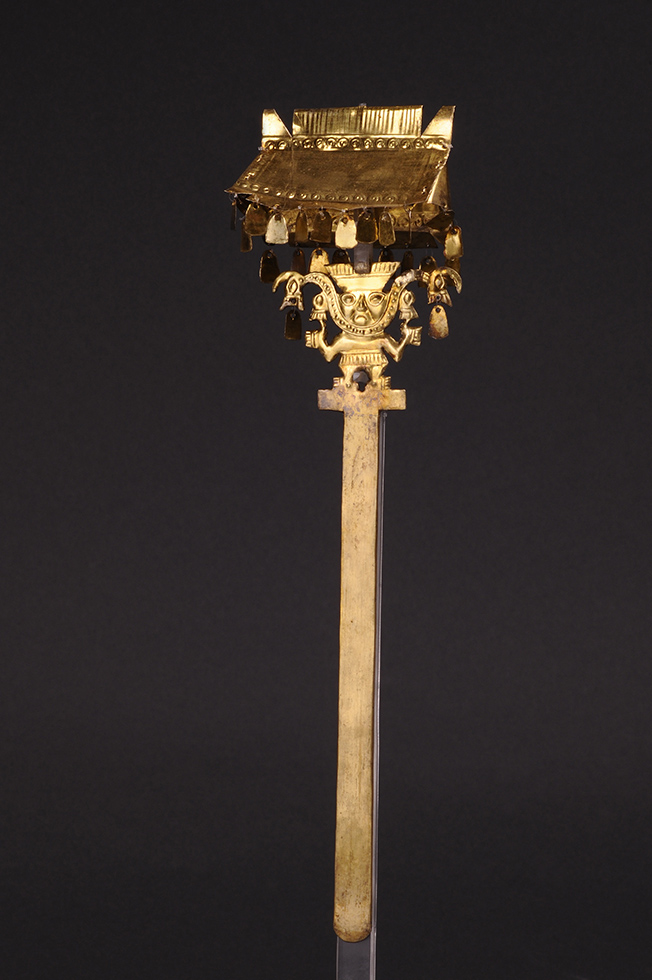
Scepter, 900–1300, Lambayeque culture; gold; Peru, Chornancap, Tomb of the Priestess (Tomb 4).
Museo Arqueológico Nacional Brüning, Lambayeque, CH-00001. Ministerio de Cultura del Perú. Photo: Yutaka Yoshii
Transcript
Male Narrator: In the centuries before the rise of the Inca, the Priestess of Chornancap was one of the most powerful women to have lived on the north coast of Peru. Her uncommon burial signaled her prominence. [somber music with native flute evoking period and mood] She rested on top of another tomb, and eight other people were interred with her. Some might have been sacrificed to accompany her in the afterlife.
Her tomb also contained a profusion of luxury goods, a small sample of which you see here. [music ends] One of her most impressive belongings was the long, gold scepter found near her left hand. Joanne Pillsbury:
Joanne Pillsbury: Her scepter is an unusual form because the bottom of it is really almost in the shape of a chisel. It’s almost like a weapon in itself.
And gold, of course, is important as well because it’s seen as incorruptible. It’s a material that doesn’t tarnish. So, it’s a very appropriate symbol for a ruler, particularly in a funerary context, because it may speak to eternal life.
[native flute and percussion evoking mood and period]
Male Narrator: If you look closely, you’ll see that the top of the scepter is in the shape of a temple. A supernatural figure—perhaps a god—stands inside. Small pieces of gold dangle from roof of the temple. These would have caught the light and enhanced the visual splendor of the Priestess as she performed ritual ceremonies.
The tomb also contained a number of objects composed of two different metals. Look on the other side of this case for the horn-shaped cups. Each of these is made of six different sheets of gold and silver soldered together. This joining of metals holds symbolic importance.
[music ends]
Joanne Pillsbury: It’s possible that these vessels had something to do with rituals of agricultural fertility, and served symbolically as a union of two complementary forces: male, female, silver, gold, that come together as a fertilizing structure for the earth.
The importance of these materials was not just what was on the surface, but that these associated ideas are inherent within the objects.